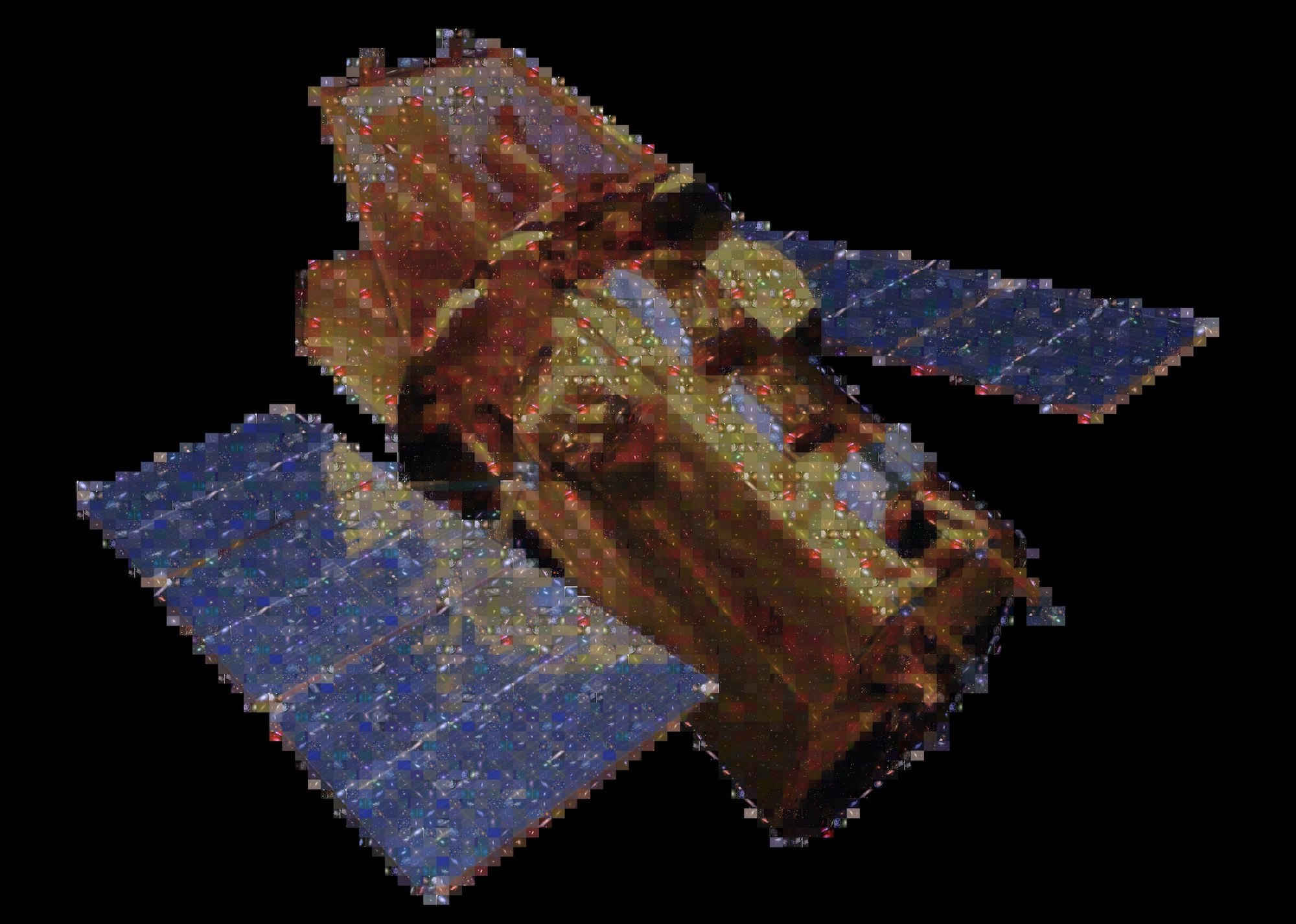Telescope on NASA's SDO Collects Its 100 Millionth Image

100 million images of the sun: The Advanced Imaging Assembly on NASA's Solar Dynamics Observatory captured its 100 millionth image of the sun on Jan. 19, 2015. The image shows the glow in the solar atmosphere of gases at about 1.5 million Kelvin.
Credit: NASA/SDO/AIA/LMSAL
On Jan. 19, 2015, at 12:49 p.m. EST, an instrument on NASA's Solar Dynamics Observatory captured its 100 millionth image of the sun. The instrument is the Atmospheric Imaging Assembly, or AIA, which gathers uses four telescopes working parallel to gather eight images of the sun – cycling through 10 different wavelengths -- every 12 seconds.
Between the AIA and two other instruments on board, the Helioseismic Magnetic Imager and the Extreme Ultraviolet Variability Experiment, SDO sends down a whopping 1.5 terabytes of data a day. AIA is responsible for about half of that. Every day it provides 57,600 detailed images of the sun that show the dance of how solar material sways and sometimes erupts in the solar atmosphere, the corona.
In the almost five years since its launch on Feb. 11, 2010, SDO has provided images of the sun to help scientists better understand how the roiling corona gets to temperatures some 1000 times hotter than the sun's surface, what causes giant eruptions such as solar flares, and why the sun's magnetic fields are constantly on the move.
In honor of the 100 millionth image, Dean Pesnell, SDO's project scientist at NASA's Goddard Space Flight Center in Greenbelt, Maryland and Karel Schrijver, the AIA principal investigator at Lockheed Martin in Palo Alto, California, chose some of their favorite images produced by SDO so far.

This mosaic of AIA's 100 millionth image is created from previous AIA images – each tile in the mosaic is 50 pixels across. Zoom in to see each tile. All the sun pictures used in the mosaic show extreme ultraviolet light with a wavelength of 193 angstroms. At maximum resolution the mosaic is 15,000 pixels on a side and each tile is 50 pixels per side.
Credit: NASA/SDO/Mosaic created with AndreaMosaic.

Blend of 211, 193 and 171 angstrom light images from SDO that includes the 100 millionth image.
Credit: NASA/SDO/AIA/LMSAL
Video of the sun in 193 angstrom light starting shortly before the 100 millionth image and ending with it.
Credit: NASA/SDO/AIA/LMSAL

This image shows an early SDO image (2010) and SDO's 100th millionth image (2015).
Credit: NASA/SDO

Processed image of SDO multiwavelength blend from Jan. 19, 2015, the date of the spacecraft's 100th millionth image release. Credit: NASA/SDO
For More Information
Credits
Please give credit for this item to:
NASA's Goddard Space Flight Center. However, individual images should be credited as indicated above.
-
Writer
- Karen Fox (ADNET Systems, Inc.)
-
Producers
- Genna Duberstein (USRA)
- Scott Wiessinger (USRA)
Release date
This page was originally published on Tuesday, January 20, 2015.
This page was last updated on Wednesday, May 3, 2023 at 1:50 PM EDT.
Datasets used in this visualization
-
[SDO]
ID: 168This dataset can be found at: http://sdo.gsfc.nasa.gov/
See all pages that use this dataset -
AIA 193 (193 Filter) [SDO: AIA]
ID: 679This dataset can be found at: http://jsoc.stanford.edu/
See all pages that use this dataset
Note: While we identify the data sets used in these visualizations, we do not store any further details, nor the data sets themselves on our site.
